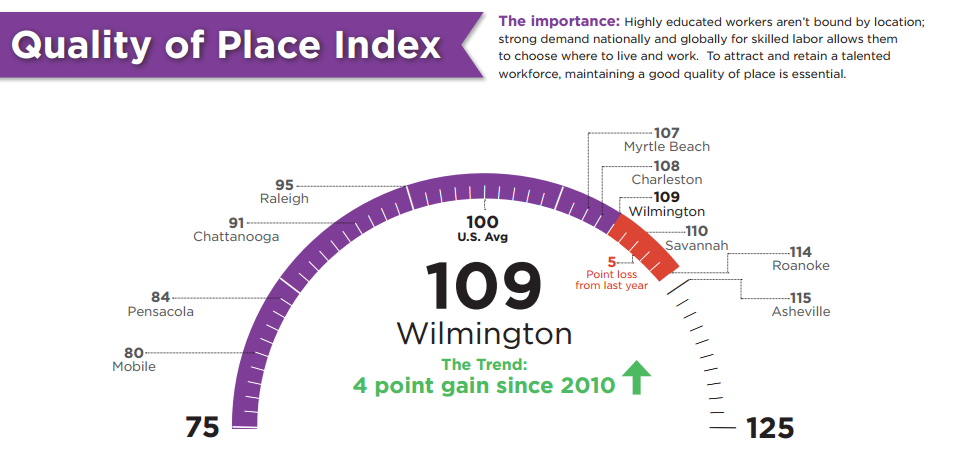In its second production of the Wilmington Regional Economic Scorecard, the Wilmington Chamber of Commerce showed the region’s economy continues to improve. But the crime rate did have an impact on one of the areas measured in the report.
The crime rate had an impact on the scorecard’s Quality of Place Index, dropping it five points from the 2015 data. Quality of Place measures the lifestyle of the area, which the report said was important as many highly educated workers can choose where to live. Wilmington’s quality — also rated by culture, healthcare, air quality and rush hour travel — still ranked ahead of several of the cities against which it is measured, including Charleston, South Carolina; Myrtle Beach, South Carolina; Raleigh, North Carolina; and Chattanooga, Tennessee. Wilmington measured higher than the national average on lifestyle quality.
While crime weighed down the region’s lifestyle quality measurements, Dr. Adam Jones, University of North Carolina Wilmington economics professor, said the crime statistics from the Federal Bureau of Investigation lag behind other data and that the numbers mostly reflect 2013 statistics.
Overall, the scorecard showed the Wilmington region’s gross regional product grew 16.4 percent between 2010-2014, while during the same time period, employment grew 8.8 percent, average pay grew 7.3 percent and per-capita income grew 9 percent.
The scorecard is a product of the chamber’s Cape Fear Future initiative. The report measured Wilmington against other comparable cities, including Asheville, North Carolina; Savannah, Georgia; Mobile, Alabama; Roanoke, Virginia; and Pensacola, Florida, as well as larger aspirational cities like Charleston and Raleigh.
The report also showed a four-point gain in the Entrepreneurial Environment Index, a 12-point gain in the Innovative Activity Index and a four-point gain in the Human Capital Index. The city posted a four-point gain in the Traded Sector Employment Index, but at a score of 66, it still ranked far below the national average. The traded sector score shows the area’s ability to sell goods and services outside of the region, which is a key measurement for economic growth.
Though the entrepreneurial numbers were growing, Jones said a decline in film production would impact the creative talent in the region and could further depress entrepreneurial activity in the future.
While Jones said the area’s entrepreneurial spirit is strong, he noted that it can have an adverse effect.
“We have a lot of small businesses, but are they able to grow?” Jones asked during a Nov. 16 event releasing the data. “We have a lot of small- and mid-size businesses.”
Diane Durance, director of the UNCW Center for Innovation and Entrepreneurship, said another issue facing area startup businesses is the lack of early state investment.
Email [email protected]




